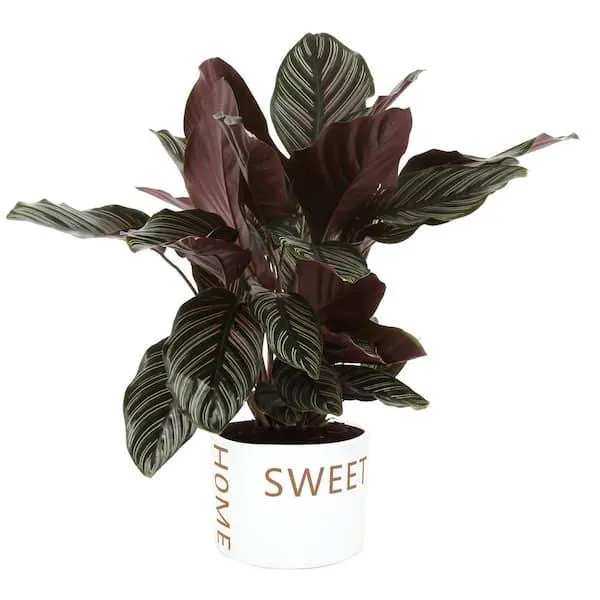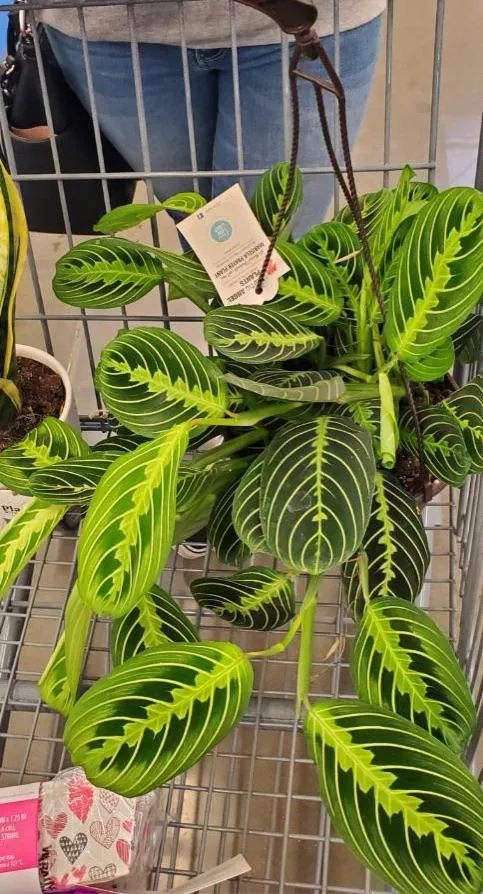Are Maranta Plants Cat-Safe?
One of the most common questions plant parents have is whether their furry feline friends can coexist safely with their green collections. If you’ve brought home a maranta plant and have a cat, you may be wondering – can cats and maranta plants live harmoniously?
What Are Maranta Plants?
Maranta plants, also known as prayer plants, are popular houseplants known for their unusual leaf patterns and colorful foliage. Native to tropical forests in Central and South America, maranta plants thrive in warm, humid conditions similar to their native habitat. Some common varieties kept as houseplants include:
- Maranta leuconeura kerchoveana (Rabbit Track plant)
- Maranta leuconeura erythroneura (Red Prayer plant)
- Maranta leuconeura massangeana (Berry Allusion plant)
With their varied patterns, maranta leaves close up at night and reopen during the day, giving these plants a Prayer Plant nickname. Their bold leaf shapes and colors make maranta plants a gorgeous accent for any home.
Are Maranta Plants Toxic to Cats?
While maranta plants are generally considered non-toxic to cats, there is always a risk when cats chew on any houseplant. From my experience as a vet, the biggest dangers come from a cat ingesting large quantities of any plant material. The ASPCA lists maranta plants as “mildly toxic” if consumed, with potential symptoms including:

- Mouth irritation: Chewing or sucking on maranta leaves could cause mild mouth discomfort.
- Gastrointestinal upset: In large doses, maranta plants may cause vomiting or diarrhea in cats.
The good news is that most cats will avoid eating maranta plants due to their mild taste and texture. However, kittens or highly inquisitive cats may be more likely to sample leaves. Always monitor cats closely around new houseplants and keep marantas out of reach of curious cats. While the risks are low, it’s best to “cat-proof” maranta displays just to be safe.
Cat-Proofing Maranta Plants
Here are some tips for keeping maranta plants and curious cats from crossing paths:
- Secure the plant: Place the maranta on a high shelf, hanging planter or pedestal well above cat-grazing level.
- Use barriers: A sturdy plant cage, mesh plant cover or other physical barrier can deter cats who like to nibble leaves.
- Pot carefully: Choose heavy, sturdy pots that won’t tip over if swatted by a playful paw. Secure pots to shelves if needed.
- Remove temptation: Stow drooping or fallen maranta leaves promptly to minimize tasty treats for cats.
- Redirect attention: Provide plenty of appropriate cat toys and scratching posts to entertain your furry friend.
With the right precautions, it’s totally possible to keep your kitty and maranta cohabiting peacefully. But some cats are simply too curious – if chewing is an issue, it may be best to find your maranta a new home away from prying cat mouths.
Real-Life Cat and Maranta Coexistence
As an example, my own cat Tiger has never shown any interest in my Prayer Plants, even though they’re within his reach. I think placing them on a high shelf, out of his usual paths, helps curb any temptation. My friend’s cat Gizmo, however, is brazenly curious – she’s more of a “try everything once” kind of girl. For her mischievous maranta munching, barrier baskets were the solution. Now Gizmo leaves the plants alone, opting to chase feathers instead.

The behavior of individual cats varies greatly. While most felines steer clear of unfamiliar foliage, others may sample anything leafy to confirm it’s not edible. So it really depends on each cat’s personality whether maranta plants pose any risk. With basic precautions, many cats and plants can peacefully coexist in the same home. But it’s always wise to stay vigilant where curious kitties roam.
Alternative Plant Choices for Cat Owners
For those who want to keep plants but have uninhibited cats, here are some leafy options that are safe for feline friends:
- English Ivy – Nontoxic and tough, perfect for climbing.
- Spider Plant – Safe and kid of impossible to kill, great for beginners.
- Pothos – Toxicity very low, vines wildly for visual appeal.
- Sansevieria – Virtually indestructible succulent-like snake plant.
- Peace Lily – Gorgeous bloomer and won’t make your cat sick.
Consider your cat’s personality when choosing plants. Choose sturdy, low-interest varieties if cats are nibblers. For well-behaved felines, marantas and other mildly toxic plants can coexist with care. But no risk is zero – research toxicity levels and watch for chewing signs with any houseplants around curious cats.
Final Thoughts on Cats and Maranta Plants
In summary, while maranta plants are generally safe for cats if consumed in small doses, there is always potential for mouth irritation or tummy troubles if chewed or eaten voraciously. The best approach is to take precautions like positioning marantas high up, using barriers, monitoring plants closely, and providing plenty of interesting cat toys as alternatives to leaf munching. And if all else fails, seriously curious cats may be happier living plant-free for their safety.

With some common-sense steps, most cats and marantas can coexist peacefully indoors. But safety always comes first – if any plant poses a hazard, it’s best to rehome the plant versus risking kitty health. With care and compromise, wonderful indoor gardens welcoming both people and pets can thrive. Just keep vigilant watch as long as plants remain within pawing distance of furry friends.
Care Tips for Maranta Plants
| Light | Water | Soil | Humidity | Temperature |
|---|---|---|---|---|
| Bright, indirect light. Avoid direct sun which can burn leaves. | Allow soil to dry out slightly between waterings. Water when top 1-2 inches of soil is dry. | Peat-based, well-draining potting mix. Maintain moist but not soggy soil. | Prefers humid conditions. Group with other plants or use pebble trays to increase humidity. | Grow between 65-80°F. Ideal daytime 70-75°F and nighttime 65°F. |
| May need supplemental lighting if indoor winter light is low. | Avoid overwatering which can cause root rot. Water less in winter when growth is slowed. | Repot every 1-2 years in early spring in a pot with drainage holes slightly larger than root ball. | Avoid fast fluctuations in temperature and humidity which can damage leaves. | Susceptible to cold drafts and heat vents. Move away from direct sources of hot or cold air. |
| Rotate plants occasionally to encourage uniform growth. | Leaves may flop if soil is too dry or wilt if overwatered so check soil regularly. | Use sterile potting mix to avoid introducing diseases from non-sterile soil. | Misting foliage is beneficial but avoid wetting leaves when lights are on to prevent fungal spots. | Avoid temperature below 50°F which may cause leaf drop or damage. |
FAQ
-
Can maranta plants be attractive to cats?
Basically, some cats may be a bit interested in maranta plants, but they aren’t like catnip. The leaves don’t have essential oils that would get cats real hyped up like catnip does. At the same time, some cats are curious about all types of plants and may chew on the leaves if given a chance. Most cats aren’t too bothered by maranta plants though.
-
Will maranta plants make my cat sick?
it’s unlikely a cat would become ill from nibbling on a maranta plant. The plant contains small calcium oxalate crystals that could cause an unpleasant sensation in a cat’s mouth, but it would not poison them. However, if a cat were to eat a whole lot of leaves, it’s possible they could experience some minor stomach upset. Overall maranta plants are not seen as toxic to cats.
-
How can I stop my cat from chewing maranta leaves?
If your cat seems interested in tasting maranta leaves, you can try putting the plant up high where kitty can’t reach it easy. Or maybe try clipping or pinching the leaves your cat finds tasty? You could also try a spray deterrent like Bitter Apple on the leaves. But ask yourself honestly – is all that effort worth it just to save a plant from some nibbling? Maybe let the cat have a leaf every now and then, within reason.

-
Will maranta plants help repel cats?
Not really. Unlike plants such as citrus or lavender, maranta doesn’t have strong essential oils that would put cats off. The crystals in the leaves could irritate a cat’s mouth if eaten, but they won’t give off a smell that deters cats from entering an area. On the other hand, cat repellent sprays sometimes use essential oils from other plants combined, so they may work better than just maranta alone.
-
Do cats enjoy digging in maranta soil?
Sometimes. Raw potting soil can be enticing to cats due to smells and texture. However, unless the soil is exceptionally aromatic, maranta potting mix alone is unlikely to excite a lot of interest from most cats. It really depends on the individual cat. If litterbox habits are okay, a small amount of play in the soil is no big deal. But be on the lookout for excessive digging that could damage roots.
-
Can I grow maranta and have a cat?
Yes, absolutely! For a healthy cat really no ordinary houseplant poses a threat. Having a few maranta plants can add beauty to a home whether furry friends are present or not. Just be aware of any signs of chewing or digging, and move plants up high or behind barriers if needed. Overall maranta and cats can coexist peacefully in the same space. With a little care paid to both, there’s no reason not to enjoy both indoors.
